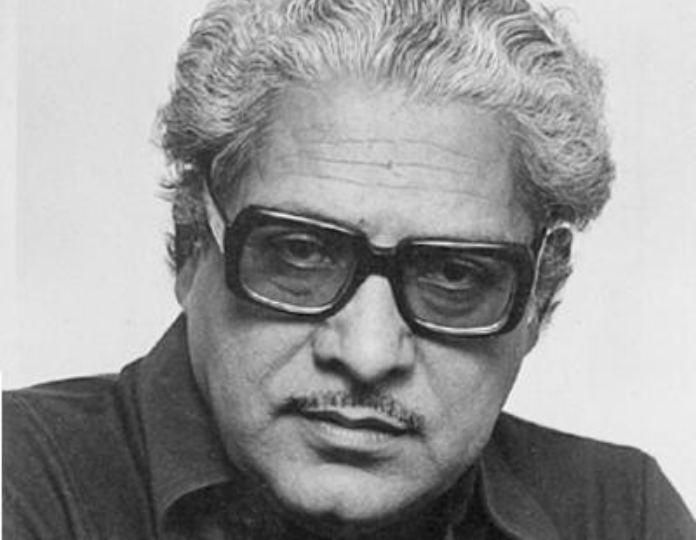The champion of the ordinary-middle class, Basu Chaterjee, makes the common man a hero and their day-to-day lives as exciting as a fairytale. His films have characters with their feet on the ground, the problems they are facing are real, their triumphs are relatable; and the losses feel like our own.
Basu Chatterjee, along with filmmakers like Hrishikesh Mukherjee, Gulzar, and Basu Bhattacharya, were pioneers of middle-of-the-road cinema. All of the above were somehow influenced by Bimal Roy. And like him, they were sensitive to women, and remarkably, many of their lead characters were strong women.
Basu Chaterjee is also known to portray female characters differently. With a keen interest in understanding the thoughts and desires of women. He sought to unravel their notions of romance and their pursuit of meaningful connections, whether physical or platonic.
Early Life
Basu Chatterjee was born in Ajmer, Rajasthan, India, in a Bengali family on January 10, 1927. In 1950s, Basu Da started his career as an illustrator and cartoonist for the weekly tabloid Blitz published and worked there for 18 years.
Cinamatic Journey of Basu Chatterjee
He began his film journey as an assistant to Basu Bhattacharya in the Raj Kapoor and Waheeda Rehman starrer Teesri Kasam (1966). Chatterjee made his directorial debut, with “Sara Akash (1969),” based on a novel by Rajendra Yadav. The film earned him the Filmfare Best Screenplay Award.

“Piya Ka Ghar (1971),” starring Jaya Bhaduri and Anil Dhawan, is a heartwarming story about a couple’s life in a bustling Mumbai chawl. It explores the themes of love and accommodation in a small living space, reflecting the spirit of the city.
Amol Palekar and Vidya Sinha starrer “Rajnigandha” came in 1974, and delves into the complexities of past and present relationships, It is a nuanced exploration of a woman’s heart. The film also had soulful songs “Kai Baar Yuheen Dekha hai” and “Rajnigandha Phool Tumhaare.”
In 1976, Basu Chaterjee came up with romantic comedy “Chhoti Si Baat,” story of a shy man’s pursuit of love. The film is a delightful watch, filled with humor and life lessons. The film stars Amol Palekar, Vidya Sinha and Ashok Kumar.
Chatterjee’s exposure of influenced his cinematic style, which often reflected the simplicity and nuances of middle-class life. His films were not about grandeur or melodrama; they were about the everyday joys and sorrows of ordinary people. This approach set him apart during an era dominated by larger-than-life Bollywood blockbusters.
Middle of the Road Cinema
Some other important films of this time were Us Paar in 1974, Chitchor in 1976, Safed Jhooth in 1976, Priyatama in 1977, Dillagi and Tumhare Liye in 1978, Do Ladke Dono Kadke, Manzil, Chakravyuha, Prem Vivah, Ratnadeep in 1979, Man Pasand, and Apne Paraye in 1980.
Shabana Azmi, Girish Karnad starrer “Swami (1977)” was an adaptation of a novel by Sarat Chandra Chattopadhyay. It tells the story of a woman’s journey through life and love, highlighting the societal expectations of the time.
In 1978, Basu Chaterjee made “Khatta Meetha,” a family comedy where two widowers with grownup kids decided to marry. Kids were not ready for the change and all hell broke out when all of them shifted to a house. In 1979 he directed Baton Baton Mein (1979), starring Amol Palekar and Tina Munim. The film is a simple romantic tale set in the local trains of Mumbai. This film captures the nuances of daily commuting and the blossoming of love amidst the hustle-bustle.
Chatterjee’s filmography is diverse, including not only Hindi films but also Bengali cinema. He directed “Hothath Brishti” (1998), a Bengali film featuring actors from both Bangladesh and India. His contribution to Indian-Bengali cinema continued with films like “Chupi Chupi” (2001) and “Tak Jhal Mishti” (2002), further cementing his status as a cross-cultural storyteller.
The Craft of Basu Chaterjee
Basu Chatterjee had a knack for portraying the allure in the lives of everyday middle-class individuals on the big screen. His films delved into the intricacies of relationships—be it between Lovers, spouses, siblings, or with other family members. He immersed himself in the complexities of human relationships, shedding light on the ordinary yet fascinating aspects of life.
Basu Chatterjee’s filmmaking style was a celebration of the ordinary, bringing to light the beauty and drama of everyday life through a lens of empathy and gentle satire.
The greatest quality off His films is their realism and subtle humor. He had a unique ability to find charm and interest in the mundane, turning day-to-day scenarios into compelling cinematic narratives. The characters in his films are well-rounded individuals, each with their own quirks and idiosyncrasies. Their relatable traits made them feel like real people rather than just fictional creations.
Basu Chatterjee always had his focus on the everyday lives of middle-class Indians. It was a stark contrast to the larger-than-life narratives prevalent in mainstream Bollywood cinema.
Moreover, Basu Chaterjee’s films were known for their narrative-driven approach. He avoided the use of extravagant sets or melodramatic elements, instead relying on strong scripts and naturalistic performances to engage the audience. This minimalist approach not only set his work apart but also made his films more accessible to a wider audience who could see reflections of their own lives on the screen.
Personal Life of Basu Chatterjee
Basu Chatterjee passed away on June 4, 2020, in Mumbai. It was the end of an era. An era of simple, relatable stories, heartfelt characters, and positivity. The world will always miss his depiction of the simple, yet complex, realities of ordinary people, dealing with relatable issues such as love, family, and societal norms.
In 2023, Penguin Random House released Anirudha Bhattacharjee’s book “Basu Chatterji: And Middle of the Road Cinema,” which is a study of Basu Chatterji’s works.
Basu Chaterjee on IMDB